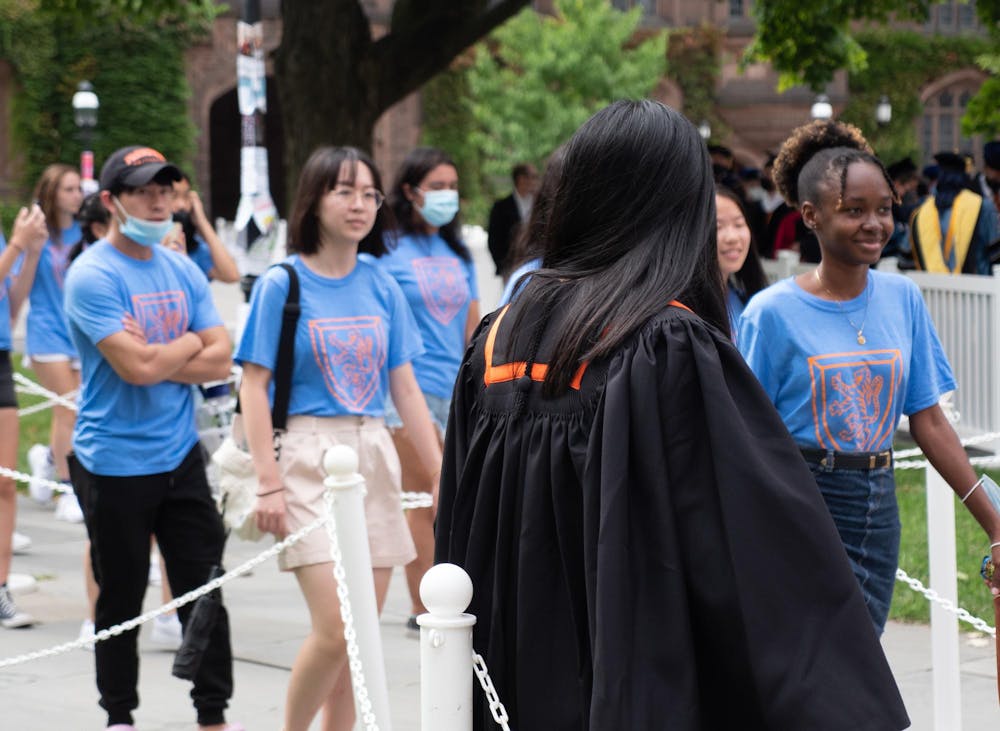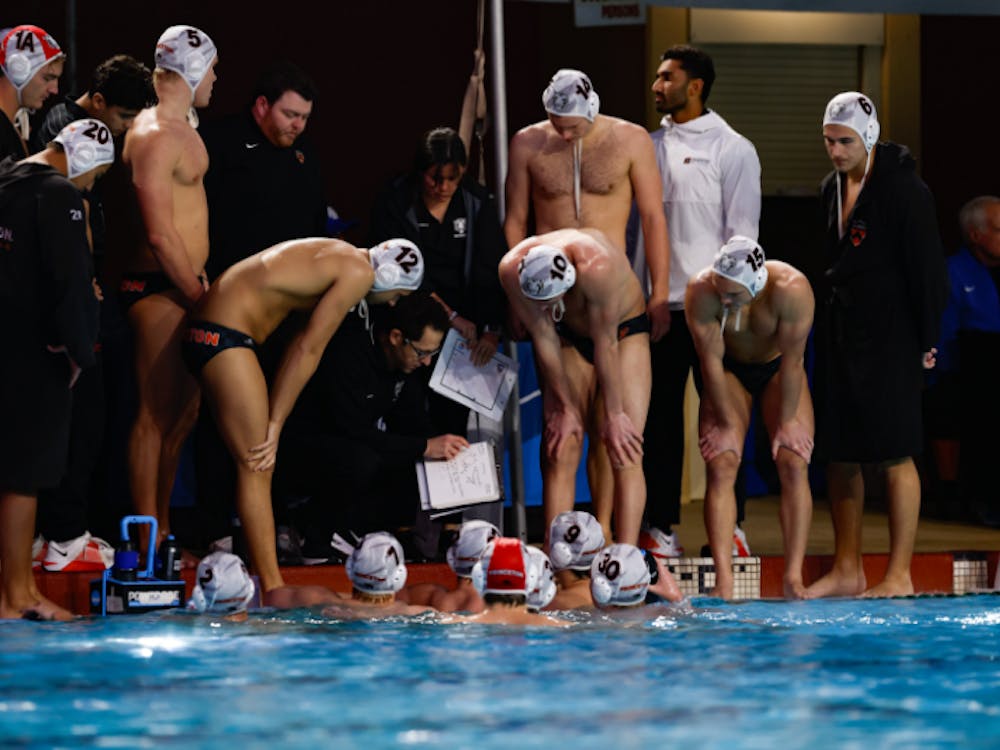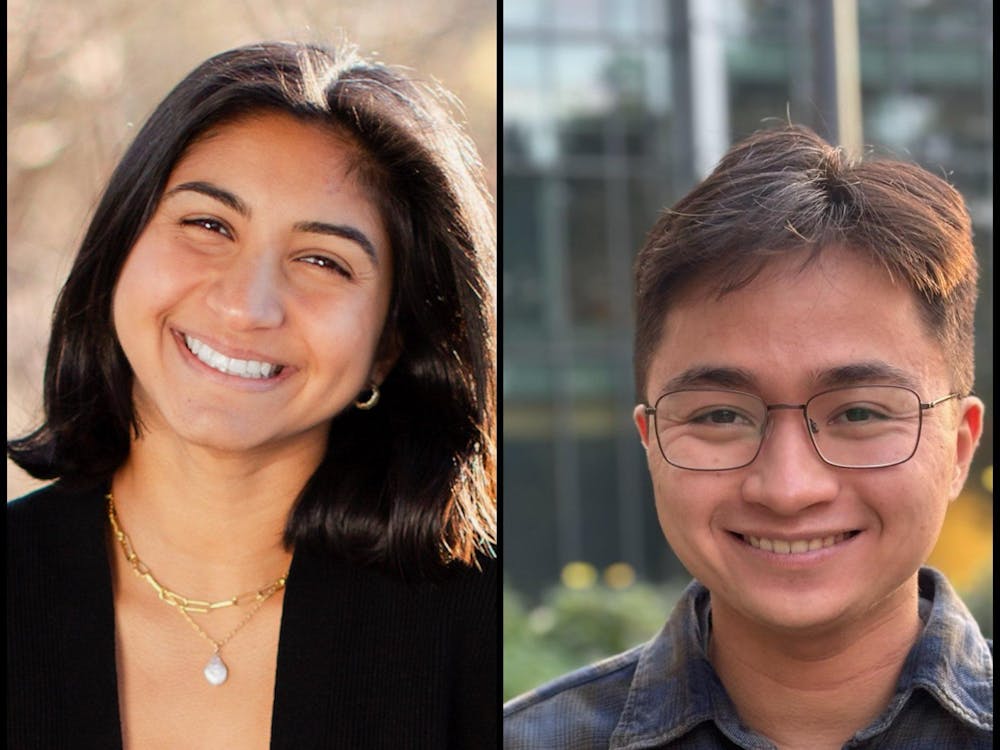In the Class of 2029, 5 percent of students identified as Black or African American — the lowest share in many years.
The last time that Black enrollment stood close to five percent was in 1968, according to data compiled from the Common Data Set, Office of the Registrar records, and The Daily Princetonian’s archives. In the last few decades, the percentage of Black students in incoming classes has averaged around eight or nine percent.
The Class of 2028, the first class admitted after the Supreme Court banned race-conscious affirmative action, saw little change in racial diversity. However, this year, the percentage of Black or African American-identifying students fell by nearly four percentage points. At the same time, the number of students who did not disclose their race rose from 7.7 to 8.2 percent.
“This is one year of data, and there are natural fluctuations that will happen given the variability of the applicant pool,” University spokesperson Jennifer Morrill said in a statement.
Princeton has “scrupulously adhered” to the Supreme Court’s decision, Morrill added. “Neither application readers nor any personnel involved in admissions have access to demographic race and ethnicity data collected on the application form until the incoming class is finalized, after the waitlist closes in the summer,” she wrote.
Some Black students at Princeton told the ‘Prince’ that they markedly felt effects of the undergraduate demographic composition on campus life.
As Halaylah Lewis-McGlothan ’29 partook in various orientation events, she and her friends were struck by the scarcity of Black students. Lewis-McGlothan, who hails from Pennsylvania and attended predominantly white schools her entire life, was looking forward to being at a place where “more people looked like [her].”

“We were looking around and wondering: ‘Where were the rest of us?’” Lewis-McGlothan told the ‘Prince.’ “We kind of expected there to be more of us, especially considering what we had heard,” she added, pointing to the University’s values of diversity and inclusivity.
Students such as Tova Jean-Louis ’29 and Michael Njoku ’29 pointed to the end of affirmative action as a key contributor in lowering Black enrollment. Njoku, who grew up in Anchorage, Alaska, said that Princeton’s campus felt reminiscent of his predominantly white hometown.
“I think it’s important for us to pay attention to make sure that our university is still representative of our public, and that no matter the amount of students that get into a university, to make sure that all voices are heard — especially minority voices, in a time where we’re facing a lot of changes,” Chris-Tina Middlebrooks ’27, the president of Princeton’s newly-reactivated chapter of the National Association for the Advancement of Colored People (NAACP), told the ‘Prince.’
Meanwhile, the number of Hispanic students remained stable, and the share of Asian students in the incoming first-year class increased from approximately 24 percent last year to 27 percent.

Notably, the number of international students increased by about three percent, even amid visa revocations and heightened scrutiny of foreign scholars under the Trump administration.
With respect to Black student enrollment, peer institutions saw comparable declines a year earlier than Princeton: Black enrollment in Harvard’s Class of 2028 fell four percentage points, while the Massachusetts Institute of Technology (MIT) reported significant declines among Black, Hispanic, Native American, and Pacific Islander students.
“The nation is now seeing — or perhaps more accurately, not seeing — a lost generation of Black students on the nation’s foremost campuses,” Justin Driver, a Yale Law School professor who studies race and affirmative action, wrote to the ‘Prince.’
“I fear Princeton’s plummeting Black enrollment rate augurs ill for many other leading colleges,” Driver continued.
Eric Ginsberg, a college advisor for New Jersey-based test prep company Solution Prep, said he feared Trump’s attacks on initiatives deemed to be DEI-related would push colleges towards “oddity, inequity, and exclusion.”
In the wake of affirmative action, Princeton and its peer institutions have sought new admissions techniques to continue cultivating classes with diverse backgrounds. Immediately following the Supreme Court ruling, University President Christopher Eisgruber ’83 expressed Princeton’s intentions to “work vigorously to preserve — and, indeed, grow — the diversity of our community while fully respecting the law.” Changes included new essay prompts focused on applicants’ identities and an ad hoc committee responsible for evaluating new admission policies.
“While I understand that the Trump Administration’s assault on higher education places universities in an unenviable position, I also believe that they possess numerous viable mechanisms for pursuing racial diversity that honor the Supreme Court’s decision,” Driver wrote. A recent executive order asked the Department of Education to collect race, gender, and other demographic data from college applicants to expose “unlawful practices” regarding the “consideration of race in higher education admissions.”
It is unclear if Princeton’s reported Black enrollment will continue to fall — a trend complicated by the growing number of applicants choosing not to disclose their race. But students say that the impact may be immediate.
“As far as what this means for our classes’ future at Princeton, or the future culture at Princeton, I hope that we see a positive effect: Black students decide to come together with more purpose, and the Black student unions thrive,” Lewis-McGlothan said.
“But it’s very likely that we see the opposite of this, and that Black students become more isolated; it could even have negative effects on their academics,” she added. “I’m hoping for the best.”
Sena Chang is a senior News writer for the ‘Prince.’ She typically covers campus and community activism, the state of higher education, and alumni news.
Please send any corrections to corrections[at]dailyprincetonian.com.








